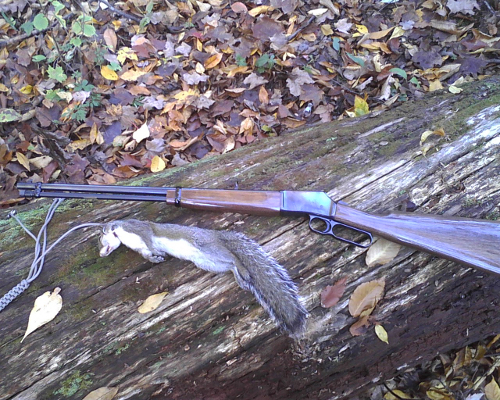I have a confession to make: I don’t come from an outdoorsy family—I didn’t grow up camping, shooting guns, and hunting. In fact, it took me until I was in college before I ever shot a gun, and I had never gone hunting until just last year.
It can be difficult to take up a hobby like hunting if you don’t have friends and family who are hunters themselves. Reading about where to hunt, how to shoot accurately, and how to clean the game when—or more appropriately, if—you kill it only takes you so far. At some point you need to get your hands dirty, and that is when it would be nice to have an advisor standing by to offer advice. Unfortunately I don’t have an advisor, so I have to do my best to take the information I learn from books and the internet and utilize it in the hunting field.
This series is going to chronicle my attempt to transform myself from an absolute tyro hunter into something reasonably approximating a competent hunter.
With my limited hunting experience, going after game the size of a deer is a daunting proposition. In theory I know how to field dress a deer, but once I have the downed animal in front of me I fear it would be a bit overwhelming to dress it and haul it out of the woods by myself, and for that reason I have elected to focus on smaller game which will be more manageable for a solo and inexperienced hunter. This season I will be focusing on small game, in particular squirrels, rabbits, and grouse. I fully plan to graduate to turkey, deer, and larger game at some point, but for this season I think it is best to start small.
Most of what I know about hunting comes from the books that I publish about hunting; however, most of those books are specifically about hunting large game. That’s not to say these books aren’t helpful to the small game hunter. They teach the mentality required to bag game, how to move and be observant while traveling through the woods, and how to shoot a rifle accurately from a variety of field positions. These skills are useful to small game hunting as well as large game hunting and I feel that I have a better chance to bag my quarry having read these books.
One book, .22 Caliber Rifle Shooting by C. S. Landis, does cover small game hunting, and squirrels in particular. This book has been helpful in learning some of the skills that are more specific to small game and squirrel hunting. I will probably read through the small game hunting chapters again for a refresher before the season opens.
As mentioned above, I do have one season of small game hunting under my belt. Last season I got into the woods a few times and managed to get one shot at a squirrel, which I made count. The biggest obstacle to more frequent hunting last season was the cold—I was totally unprepared for how cold it is to sit in the woods in December and January waiting for game to appear. With that in mind, keeping myself adequately protected from the cold is one of this year’s top objectives so that I can hunt more often.

Squirrel and grouse season opens here in Pennsylvania in about 10 days, and rabbits will be fair game shortly after that. I would like to get in a fair amount of early season hunting so that I can beat the cold for my own comfort and to catch the game before they become less active in the depths of winter. I will still hunt in December and January, but the early season is a priority for me.
In the upcoming parts of this series I will cover how I am preparing for this year’s hunting season and what gear I plan to bring along. Once the season begins I will do my best to log my excursions and analyze them to learn from my frequent mistakes and occasional successes. It is my wish that this series will be, at the very least, entertaining. Beyond that, I think that recording my experiences might be of use to other novice hunters with the desire to get into the hobby more seriously.